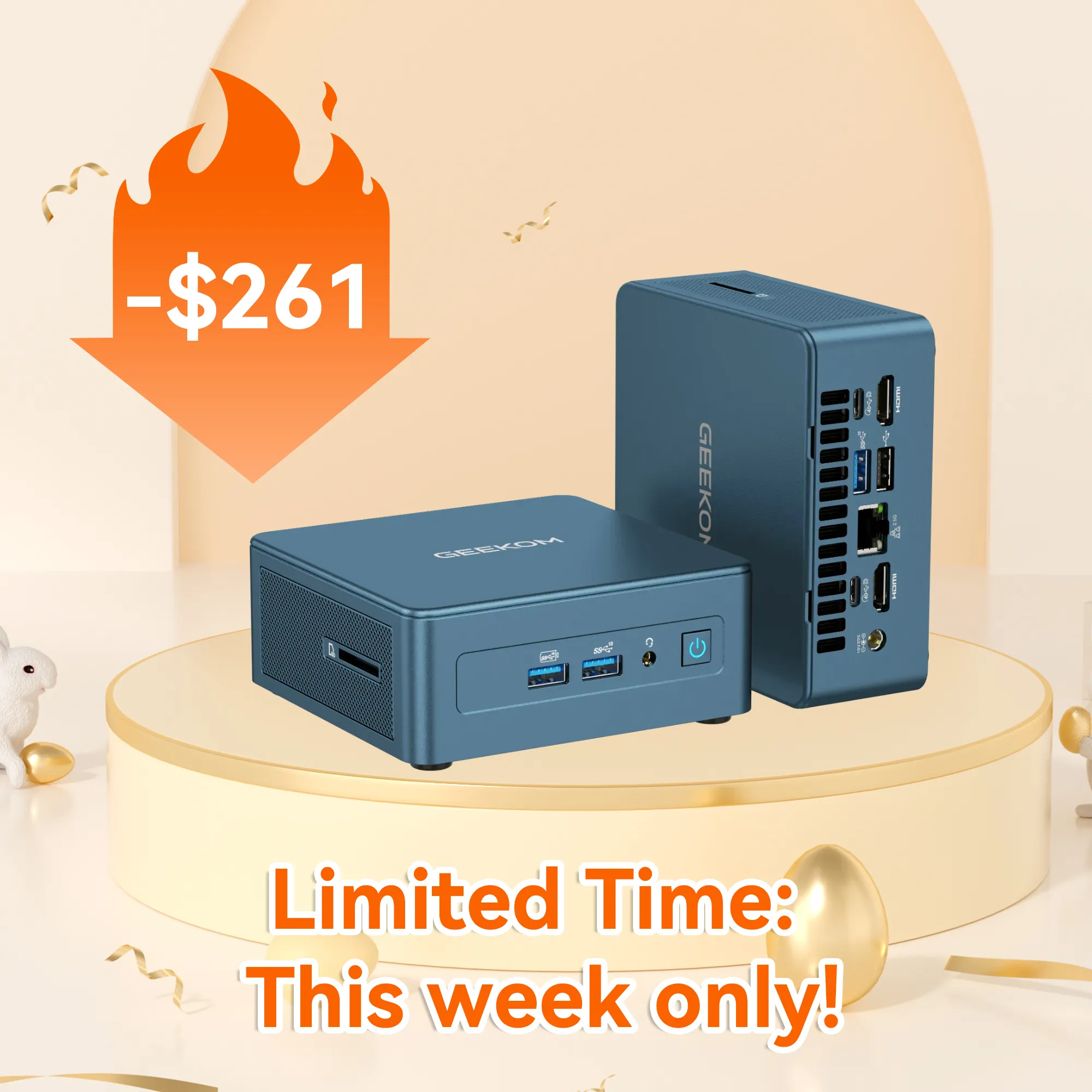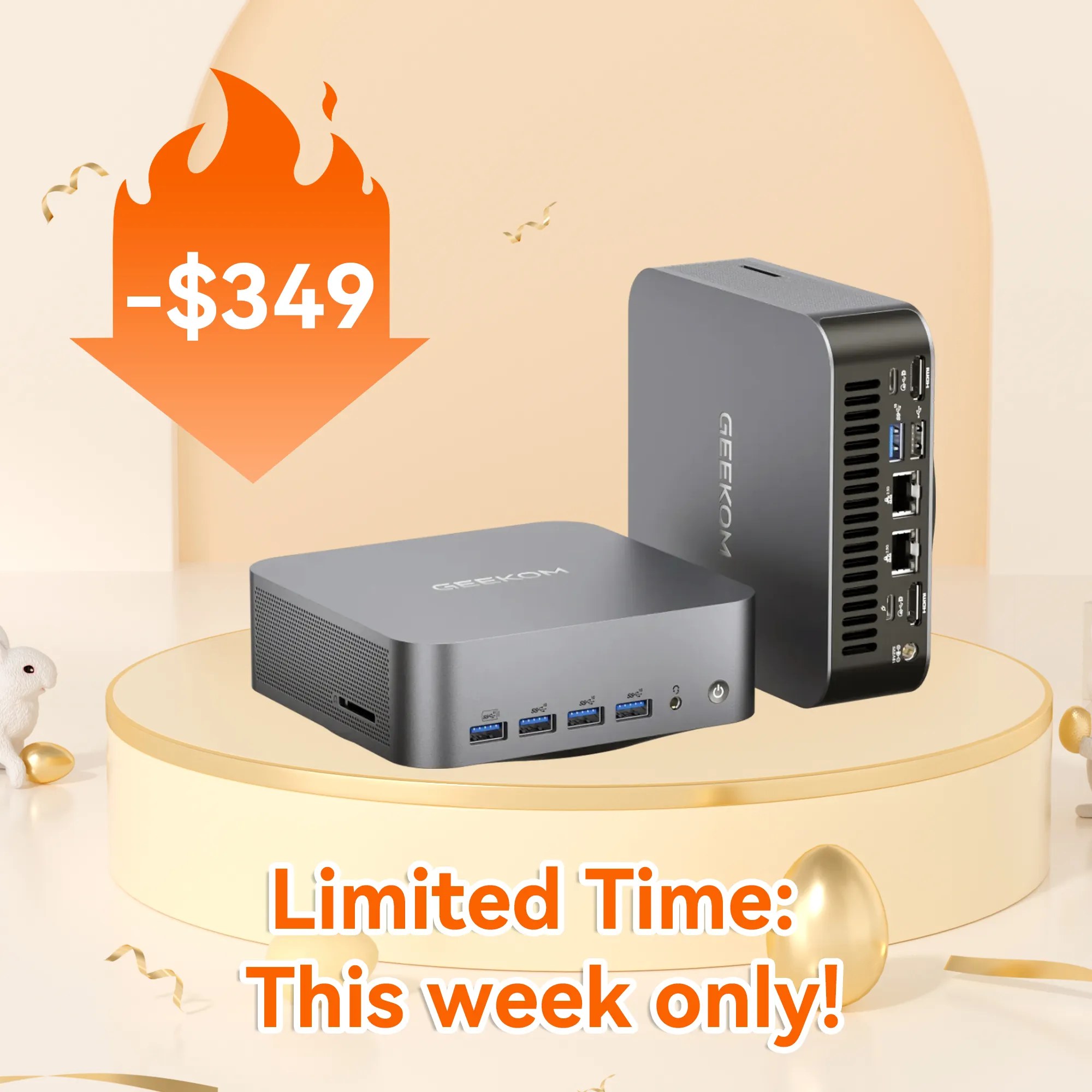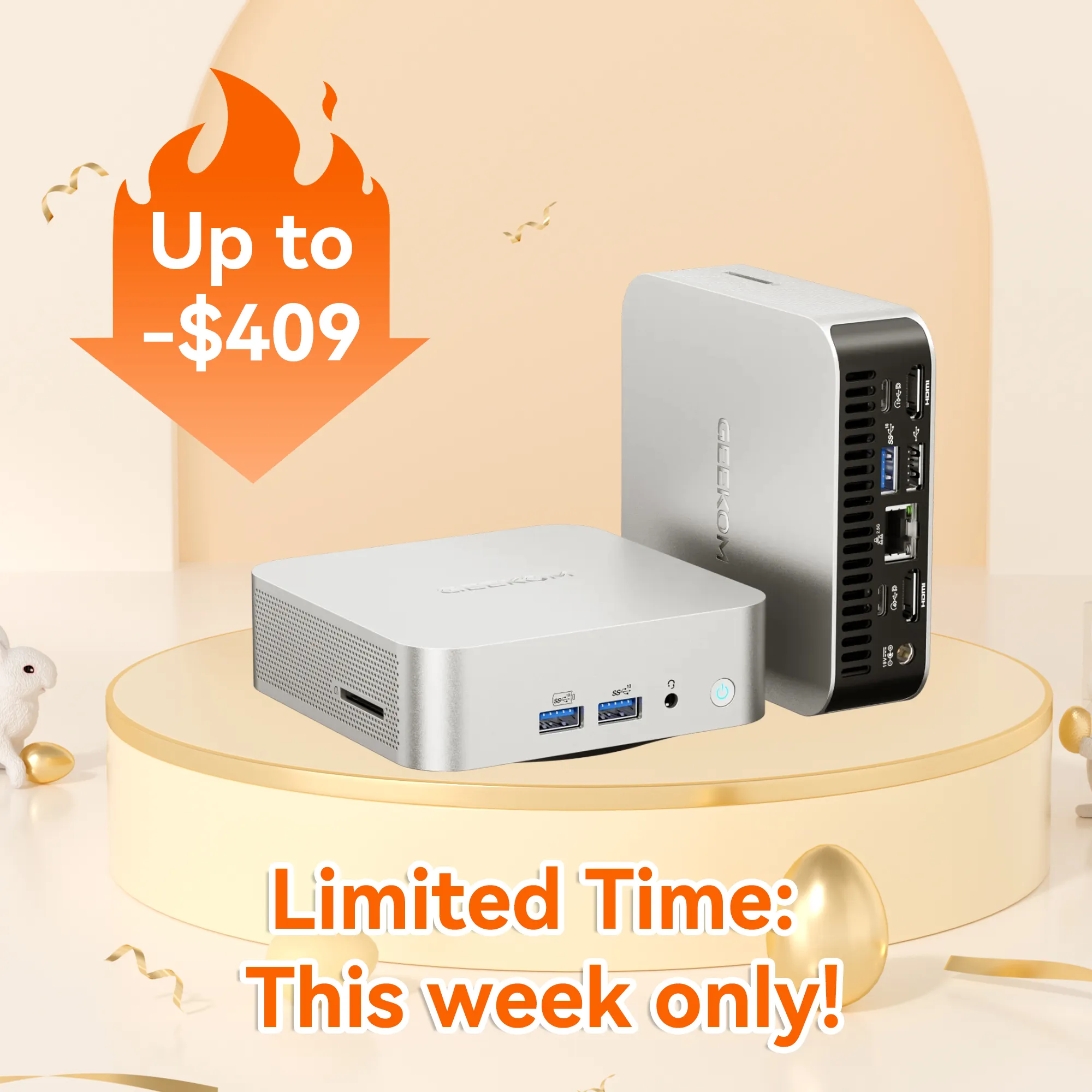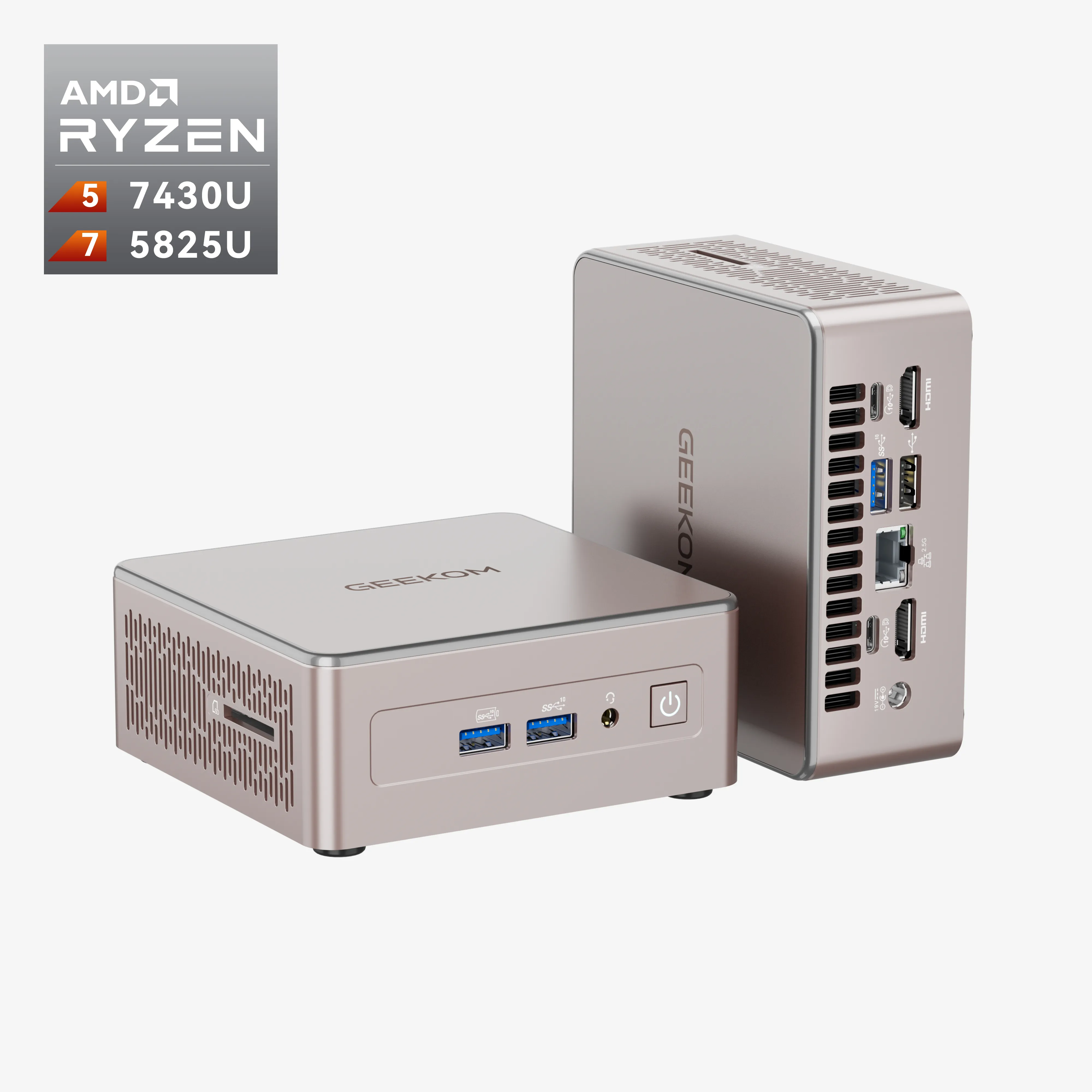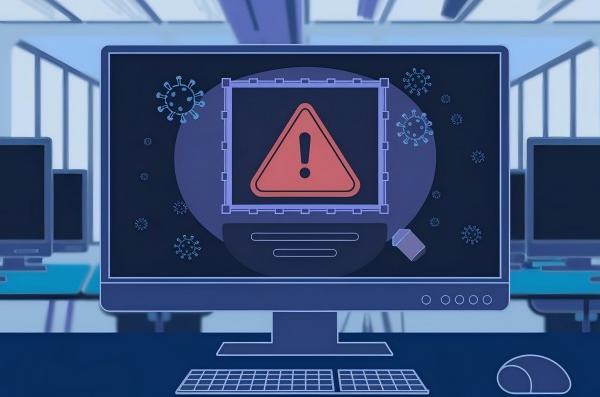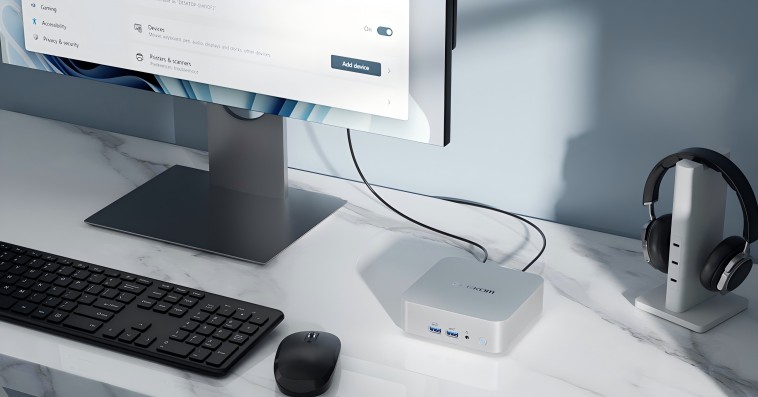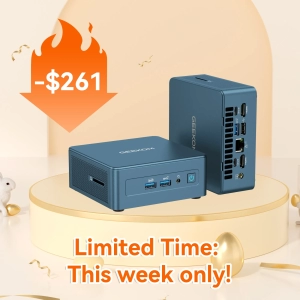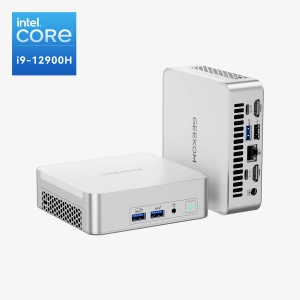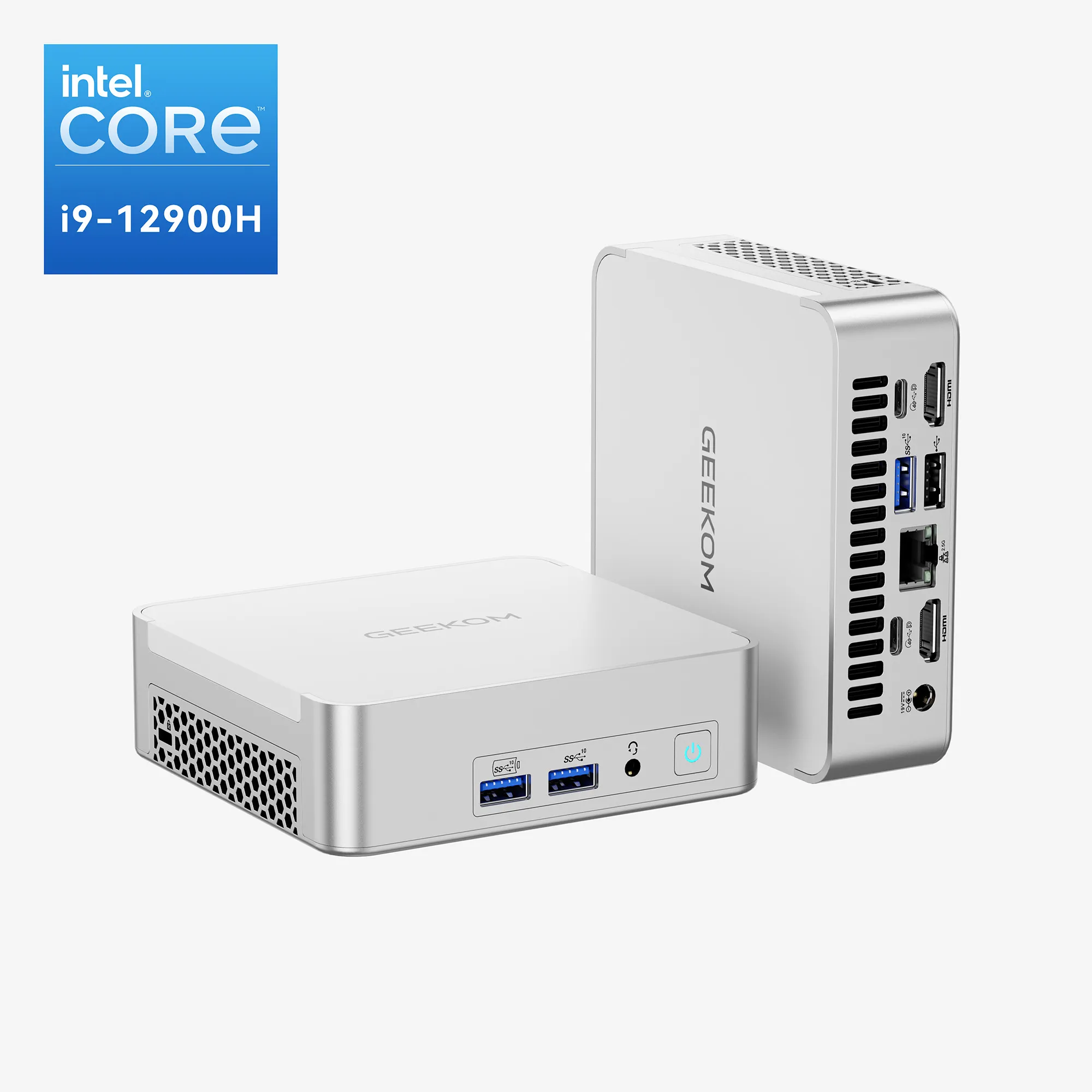The freedom to work from home is a great alternative to a 9-to-5 office job. Since the start of the COVID-19 pandemic, more and more companies are allowing their employees to work remotely, which begs the question: what kind of PC setup do you need to work efficiently from home?
A Desktop PC, Laptop, or Mini PC?
Before getting down to the hardware and peripherals, first, you should first choose between a full-size desktop PC, a laptop, and a mini PC. There are pros and cons for each system.
Desktop PCs offer the best bang for the buck.
A desktop PC is the most traditional version of a stationary computer. It’s usually a large tower that holds all the hardware inside. To use it, you need to connect it to a display and input devices.
- Cost
The main reason why desktop PCs are popular is that they offer a bit more power at more affordable prices. All else being equal, full-size desktop PCs are significantly cheaper than laptops. For example, $500 will get you a desktop PC with decent specifications, a large monitor and a keyboard and mouse combo. However, the same amount of money will only get you an entry-level laptop with basic computing capabilities.
- Upgradeability
It’s also easier to upgrade a desktop PC when you want to improve your computing experience. The RAM, SSDs, and GPU of desktop PCs are usually removable, you can conveniently replace them with new ones when the need arises. On the other hand, the CPU, RAM, and storage are often soldered on the motherboard of a thin laptop, making it almost impossible for you to upgrade them.
- Connectivity
Desktop PCs are usually packed with I/O, allowing you to connect to many different peripherals simultaneously. Most desktops have more than 2 video connectors, perfect for those who need multiple displays to deal with complex business workflows at home. On the contrary, laptops feature a very limited number of ports, with some of them only sporting one or two USB Type-C ports. So, you will need a hub for even connecting a 2.4G wireless mouse or a flash drive.
- Customization
Desktops are also highly customizable. Not only can you choose the externals like monitors, keyboards, and mouses, but you may also configure the internal hardware (including CPU, GPU, RAM, and storage) of a desktop PC as per your needs.
Laptops offer the best portability and reliability.
Laptops are portable computers with a built-in display, keyboard, and battery.
- Portability
Laptops are compact and portable. Thus, you can easily take a laptop outside of your apartment and use it for work anywhere you want to. When working from home, you also have the choice to connect your laptop to external monitors and input devices for higher efficiency.
- Reliability
Because a laptop has a built-in battery, it is less vulnerable to power fluctuations and outages. When the power goes out or fluctuates, the battery will come into effect immediately, and your unsaved work and data won’t be lost. Also, since laptops are basically all factory-built, they will receive better technical support than desktop PCs you build by yourself.
- Comfort
Laptops are often more comfortable to use, too. When you get tired, you can easily take your laptop to the sofa or your bed. But with a desktop PC or mini PC, you will have to stay at the computer desk when you are working.
- Power Usage
Generally, a laptop consumes way less power than a full-size desktop PC. The components of laptops are designed to be more power-efficient to prolong the battery life. Using a laptop to work from home will save you a lot of electricity costs in a year.
Mini PCs may be the ideal balance.
Mini PCs are small desktop PCs running on laptop processors, so they offer you lots of benefits of both systems.
- Size
A full-size desktop PC often occupies 25L-30L of total space, while an average mini PC is smaller than 1 litre. No matter how small or crowded your computer desk may be, you can always find enough room for a mini PC. Most mini PCs come with a VESA-mount bracket, making it possible for you to hide them behind your monitor.
For people who work from their homes and offices, taking a mini PC on their commute is considerably easier than carrying a laptop. Mini PCs can fit into the smallest backpacks or cross-shoulder bags, some of them may even fit into a pocket.
- Power Efficiency
Mini PCs use the same internal components as laptops, so they are also very power efficient. Some latest Celeron-based mini PCs only draw 10-15W on average, keeping one running all day long won’t lead to a high electricity bill.
- I/O
Even though mini PCs are even smaller than laptops, they generally pack many more ports. Take the GEEKOM Mini IT11, for example, it features two USB4 Type-C ports, three USB3.2 Type-A ports, one HDMI port, one Mini DisplayPort, a 3.5mm audio jack, and a Gigabit Ethernet jack. With the ability to drive four high-resolution displays at the same time, it is perfect for those with a quad-monitor setup in their home offices.
- Easy After-sale Services
While a DIY desktop can offer you the best bang for the buck, it will get very limited after-sale support. Mini PCs are often sold as ready-to-go systems. PC makers will provide the buyers with 2-3 years of warranty. When you encounter malfunctions or system failures, you can always count on trained experts to troubleshoot the problems for you.
What to Look for in the Best Home Computer?
Regardless of what form factor you choose for your work-from-home PC, the internal hardware will determine your computing experience.
CPU
The CPU is the brain of a PC, and you will need a fast one to work efficiently from home. If your work involves CPU-intensive tasks such as video editing and complex data analysis, your PC should be equipped with either an Intel Core or an AMD Ryzen CPU released within 3 years.
GPU
The integrated GPUs of modern mobile processors are becoming so good these days that graphics-intensive tasks like 4K video editing and heavy image rendering can now be done on a laptop or a mini PC. However, for professional artwork designers and video content creators, a full-size desktop PC with a premium discrete graphics card still makes more sense.
RAM
When you launch a big application on a PC, the system moves the information of that app to the RAM first so that it can load the app quickly. For an average work-from-home PC, the generally accepted baseline is 8GB of RAM, but if you regularly deal with heavier computing duties, you may need more than 16GB RAM.
Storage
While the capacity of the storage determines the number of apps and the amount of data you can store on your PC, the type of storage determines how fast you can access them. For an average work-from-home PC, we suggest a PCIe SSD with a capacity of 512GB to 1TB.
Best Computer for Working from Home
Whether you need to check your email, work on documents or use specialized software at home, a mini-computer can provide all of the features you need to be productive. Mini computers also have the advantage of being more affordable than most full-size desktop or laptop computers. Learn more about the full line of GEEKOM mini computers to decide on the right computing solution for your home office.
Mini IT11 11th Gen Intel® Core™ i7/i5
The Mini IT11 is the best mini computer in terms of processing power. This system is available with an 11th generation Intel® Core™ i7 or Core™ i5 processor and Intel® Iris® Xe graphics for running most software, streaming media and even some light gaming.
These all-purpose mini-computer builds offer users comprehensive input and output ports, including two USB4 ports. Get fast connectivity with Bluetooth® 5.2 and Dual Band 2.4 & 5GHz Wi-Fi 6 technology. The MiniIT11 and other GEEKOM mini-computers ship with the Windows 11 Pro operating system pre-installed. The price point of this system depends on your choice of an Intel® Core™ i7 or i5 processor.
If you need a mini computer that can do most productivity tasks, you are likely to be satisfied with the power and reliability of the GEEKOM Mini IT11. This build uses less electricity than most standard desktop computers and comes with a VESA mount for an uncluttered work surface.
Mini IT8 8th Gen Intel® Core™ i5
Budget-conscious customers may prefer the Mini IT8. This mini-computer is available with an eighth-generation Intel® Core™ i5-8279U or i5-8259U processor and features Iris Plus Graphics 655.
The Mini IT8 is a convenient choice for working at home. You can connect up to four screen displays with an HDMI 2.0 port, Mini DisplayPort and USB-C output. This system can also accommodate a wide range of peripherals. If you do not need eleventh generation Core™ i7 processing power for work tasks, the Mini IT8 can be the best mini computer for a home office.
Like the Mini IT11, the Mini IT8 offers customization options to meet your needs when working from home. The Mini IT8 has 16GB dual-channel DDR4 memory that supports expansion to 32 GB. A 2.5-inch SATA hard drive slot allows for storage expansion up to 2TB. Users can also access cloud storage through dual-band Wi-Fi.
Mini IT8 SE 8th Gen Intel® Core™ i3
The GEEKOM Mini IT8 SE with an eighth-generation Intel® Coffee Lake i3-8109U processor is an even more affordable home office mini computer. This model features Intel® Iris Plus Graphics 655 display technology and can support up to four displays.
Users can also customize the Mini IT8 SE to add DDR RAM and hard drive storage. This model comes with 8GB of RAM in a dual-channel DDR4 SODIMM slot that supports expansion up to 32 GB. You can expand the 2.5-inch SATA hard drive with 256GB of onboard storage to have 2TB of storage.
The Mini IT8 SE stands out as one of the best mini-computer models for power efficiency. If your work does not require advanced processing power, the Mini IT SE can be a cost-effective choice for productivity at home.
MiniAir 11 11th Gen Intel® Celeron
The MiniAir 11 is the most affordable mini-computer model for working at home. This model features a quad-core, four-thread Intel® Celeron N5095 processor. The lightweight and ultra-slim design is a good choice if you travel for work and want to take a mini-computer with you on the go.
This basic mini computer model features Intel® UHD 605 graphics and can support two 4K displays. This build comes with 8GB of dual-channel DDR4 RAM that you can upgrade to 32 GB. A high-speed SSD hard drive comes with 256GB of storage and is expandable to 1 TB. Connect to the internet with dual-band Wi-Fi.
If you are looking for a top-class mini computer priced under $300, take a closer look at the Mini Air 11. The specifications of this affordable model are suitable for a wide variety of tasks when working from home, such as running basic productivity software, browsing the internet and checking your work email.
Create a Complete Work from Home PC Setup
Once a PC is in place, you can add other pieces of kits to your work-from-home setup.
Desk and Chair
A height-adjustable computer desk is ideal for a work-from-home setup because it allows you to change your posture from time to time, minimizing the pain and stiffness of your body after working for extended periods. It’s also worth investing in an ergonomic chair, specifically one with proper cushioning for different parts of your body. Good computer desks and chairs are often expensive, but you can find affordable ones on e-commerce sites such as Ali-express and eBay.
Monitor
High-quality monitors with high resolutions, rich, vibrant colours, and high response times can undoubtedly improve your efficiency when working from home. While monitors with OLED panels are still too expensive for average consumers, you can now pick up a decent Mini-LED monitor at an affordable price. If your work requires a multi-screen setup, make sure all your monitors have similar colour reproduction.
Keyboard
If your line of work involves a lot of typing, we suggest you get a decent mechanical keyboard. Since each key has a distinctive switch underneath it, a mechanical keyboard is more comfortable to type on and more precise than a membrane keyboard.
Microphone and Webcam
Working from home often means you need to participate in online video meetings now and then, so getting a decent microphone and a good video camera may be important. For average company employees, we recommend you get a budget condenser microphone and a full-HD webcam for your WFH setup.
Headphones
For people working from home, we recommend headphones over speakers. Headphones, especially those with a closed-back design, can give you an immersive listening experience, keeping you focused on the task at hand. When you are in the middle of an online meeting, headphones can also keep the sound in and prevent it from leaking into your microphones.
Verdict
Working from home is a compelling choice because it offers you more flexibility and a better work-life balance. It also saves you from commuting during rush hours. But to be as productive as working in an office, you will need a decent PC and other useful tools. Hopefully, with the information we have provided, you can start creating your own WFH setup.



